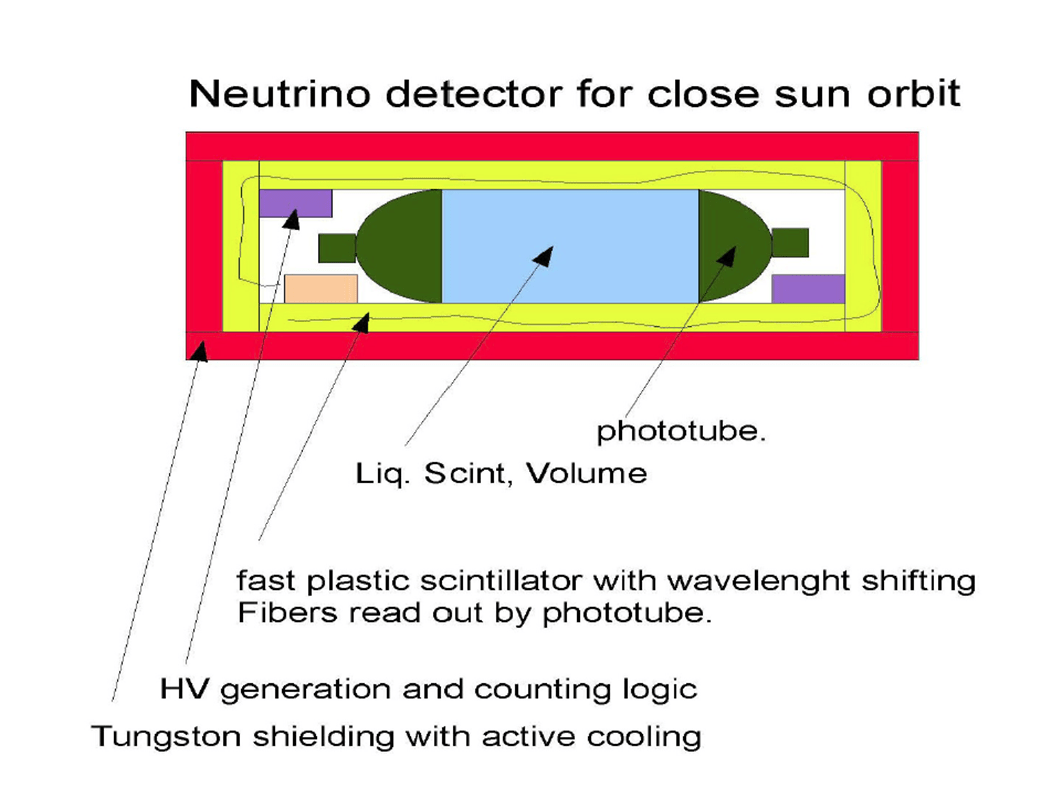Nickolas Solomey
Wichita State University
Both spacecraft and detector technology capable of operating close to the Sun would be achieved through this proposed NIAC project. This technology is needed to study our Sun’s solar interior for the purpose of better understanding our Sun, its future expected changes such as long term forecasting of solar energy output, as well as understanding fundamental physics such as nuclear fusion reaction rates, Dark Matter searches, Particle Physics Neutrino Oscillations and Nuclear Physics Matter effects of Neutrino interaction.
On the Earth the solar intensity of neutrinos is very low, but by going very close to the Sun in a close solar orbit of seven solar Radii the neutrino rate can be 1,000 times higher. In this NIAC project a small detector inside the de-coherence neutrino radius would be evaluated to explore its science potential for studying the interior nuclear reactions of the Sun. Unlike light from the Sun, which comes from the same Nuclear fusion reactions inside the nuclear furnace core but that take energy 50,000 to 100,000 years to reach the surface, neutrinos, which weakly interact, with matter, come directly out of the solar core very quickly and they will tell us much more about the current solar interior than measuring any other particle emitted from the Sun.
This proposed new NIAC concept comes with some challenges for both the spacecraft and detector design. First, current neutrino technologies are limited and large detectors are needed to make a small number of measurements. Also, all current neutrino detection technology options are Earth-based and have never flown in space. NASA has managed to do new science by using a simple technology such as the EGRET spark-chamber satellite flown in 1992. Once NASA put this satellite into an orbit high above the Earth, a new window into the universe of high-energy gamma rays was opened for scientific study.
By advancing and developing neutrino detector technology which will fly and operate in outer space, a novel opportunity to study the Sun will be created, one that will enhance our ability to predict both long-term Solar output and Solar storms as well as to perform fundamentally new science studies that are currently unattainable. Wichita State University proposes this joint project involving NASA’s Marshall Space Flight Center (MSFC) Astrophysics Center leader and the Advanced Concepts Engineering office along with South Dakota State University. The proposed NIAC project will enable an initial evaluation of technological challenges through simulations addressing the aspects of background event rejection, shielding and various possible options for neutrino signal identification.



























